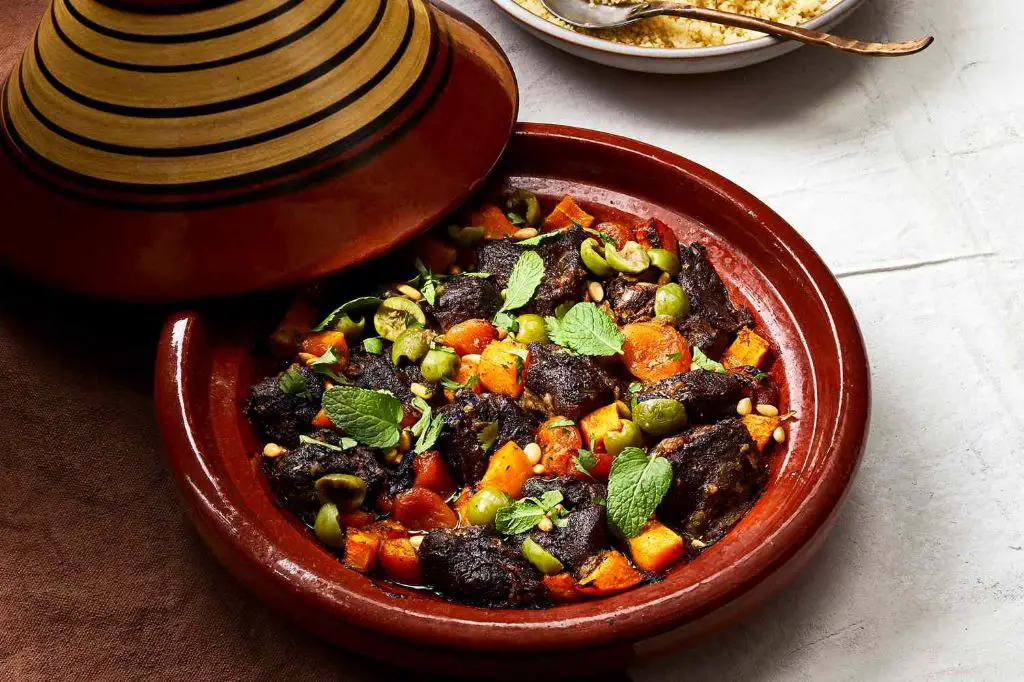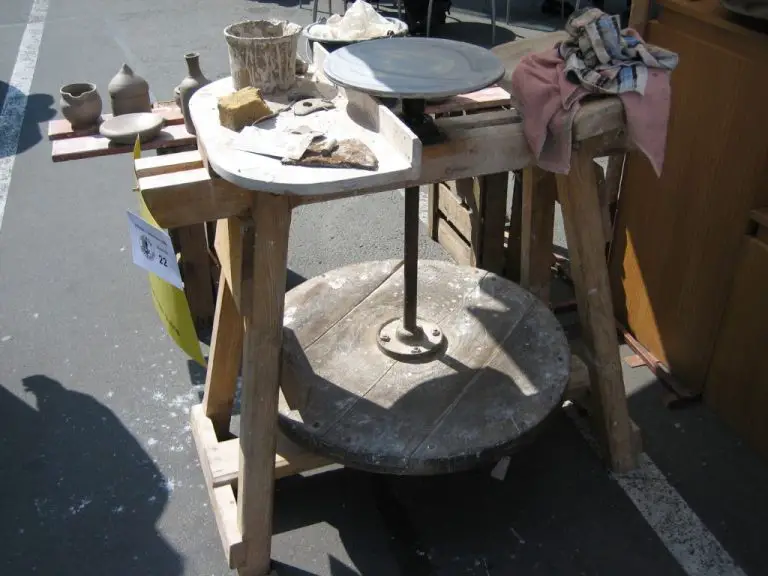What Food Is Cooked In Clay Pots?
Clay pot cooking has a long history spanning thousands of years across many cultures. The earliest known clay pots for cooking date back to the prehistoric era when humans began shaping clay into vessels for food preparation. As described on The Clay Coyote Story, clay pots emerged out of necessity and available resources before other types of cookware were invented.
In many parts of the world like India and Italy, cooking in clay pots or earthenware remains traditional and popular, with roots extending deep into the past. As noted on Italian Clay Pots for Cooking, clay pot cooking in Italy has been practiced for millennia. The unique heat retention and even cooking properties of clay have made it a staple for simmering dishes across many cultures over time (History of Clay Pot Cooking).
Benefits of Cooking in Clay Pots
Clay pots provide several health and cooking benefits over other materials like metal or glass. Some of the key advantages include:
Even Heating
Clay is an excellent heat conductor that distributes heat evenly throughout the pot. This allows food to cook uniformly without burning or overcooking certain sections. The thick walls retain heat well so the temperature stays consistent.
Moisture Retention
Terracotta clay is porous and allows some steam to seep through during cooking. This steam then condenses on the exterior walls and drips back down into the food, keeping it moist and tender. Food cooked in a clay pot tends to be more flavorful and less likely to dry out.
Adds Minerals
Cooking in unglazed or unvarnished clay pots can leach some iron, calcium, magnesium and other trace minerals into food. This can provide additional health benefits, especially when cooking acidic ingredients like tomatoes which help draw out the minerals.[1]
Types of Clay Pots
There are a few main types of clay pots used for cooking:
Unglazed
Unglazed clay pots are porous and allow moisture to evaporate through the sides as food cooks. This allows the food to brown and caramelize nicely. Unglazed clay pots like tagines are well-suited for braises and stews. According to Epicurious, unglazed clay pots “require seasoning before use much like a cast iron skillet.”
Glazed
Glazed clay pots have a glass-like coating on the interior and sometimes the exterior as well. The glaze makes them non-porous. Food and Wine notes that glazed clay pots like donabe and Korean ttukbaegi are good for soups, rice dishes, and gentle cooking. The glaze helps prevent food from drying out.
Terracotta
Terracotta is a type of unglazed clay that has an earthy red-orange color. Terracotta pots lend a rustic aesthetic and are oven-safe. They can be used for casseroles, soups, and other clay pot dishes. According to Food and Wine, soaking new terracotta pots in water helps prevent cracking.
Clay Pot Cooking Techniques
Clay pots require some special care and techniques to use properly. Here are some key tips for cooking with clay pots:
Soaking
Clay is porous, so it’s important to soak the empty pot in water for 10-15 minutes before using it for cooking. This prevents the clay from absorbing too much liquid from the dish and helps regulate the temperature. Fully submerging the pot in water allows it to fully saturate and seal the pores in the clay.1
Seasoning
Seasoning a new clay pot helps create a natural non-stick coating. To season it, coat the entire inner surface with oil and bake it upside down at 350°F for 30 minutes. Let it cool completely before use. Repeating this process a few times further seals and conditions the clay. A well-seasoned pot will have better non-stick properties.2
Slow Cooking
Clay pots are ideal for slow, even cooking. The thick walls distribute heat gently and retain moisture. Foods can simmer unattended for long periods without scorching or drying out. Clay pots aren’t compatible with quick searing or high heat, which could crack them. A low or medium stovetop setting is best for clay pot cooking.
Common Clay Pot Dishes
Clay pots are commonly used to cook rice, beans, and stews due to their ability to cook food evenly while retaining moisture. Here are some of the most popular clay pot dishes:

Rice
Clay pots are ideal for cooking rice as they allow the grains to cook gently and absorb liquids evenly, resulting in light, fluffy rice. Some common clay pot rice dishes include bai cuon from Vietnam, tahdig from Iran, and dolsot bibimbap from Korea.
Beans
The moist heat environment of a clay pot enables beans to cook thoroughly while retaining their shape and texture. Dishes like cassoulet from France and feijoada from Brazil are traditionally cooked in clay pots.
Stews
Clay pots are great for braised dishes and stews as they distribute heat evenly, resulting in tender meats and vegetables. Examples include beef bourguignon from France, Irish stew, and chicken tagine from Morocco.
Clay Pot Casserole Recipes
Clay pots make delicious one-pot casserole dishes. The moist heat and gentle cooking of the clay pot tenderizes meats and brings out rich flavors. Here are some classic clay pot casserole recipes to try:
Chicken Tajine
Chicken tajines are a Moroccan specialty, traditionally cooked in an earthenware pot. Chicken is simmered with spices, onions, olives, and preserved lemon for a complex, fragrant stew. See this Herb and Lemon Chicken Tajine recipe for a simple take on this classic.
Beef Bourguignon
This French dish of braised beef, red wine, mushrooms, and pearl onions is perfectly suited for the clay pot. The gentle braising results in melt-in-your-mouth tender beef and rich sauce. Cook it in a Romertopf or other covered clay baker.
Coq Au Vin
Another French classic, coq au vin features chicken braised in red wine, lardons, mushrooms, and pearl onions. The clay pot allows the sauce to reduce slowly while infusing the chicken with flavor. Use a whole cut up chicken or bone-in chicken thighs.
Clay Pot Soup Recipes
Clay pots are the perfect vessel for cooking flavorful soups and stews. The porous terra cotta absorbs and distributes heat evenly, resulting in soups with intensely developed flavors. Some classic soup recipes that are ideal for clay pot cooking include:
French Onion Soup
French onion soup is a classic recipe that involves slowly caramelizing onions in butter or oil to develop their natural sweetness. Cooking the onions in a clay pot allows them to caramelize evenly without burning. The soup is finished by adding beef or chicken stock and toast or croutons. Get a recipe for French Onion Soup in a Clay Pot here: https://arbuz.com/recipes/clay-pot-soup-recipe/
Chicken Tortilla Soup
This Mexican-inspired soup features chicken, tomatoes, onions, garlic, and tortilla chips simmered in a broth. The clay pot helps the ingredients melt together into a rich, complex flavor. Try this Chicken Tortilla Soup recipe cooked in a clay pot: https://miriamsearthencookware.com/mec-blog/5-healthy-hearty-clay-pot-soup-recipes/
Chili
Chili is a thick, spicy stew that’s perfect for cooking low and slow in a clay pot. The terra cotta evenly distributes heat to allow the meat, beans, tomatoes, and chiles to develop deep, layered flavors. Get tips for making the best Chili in a clay pot here: https://miriamsearthencookware.com/mec-blog/5-healthy-hearty-clay-pot-soup-recipes/
Clay Pot Stew Recipes
Clay pots are excellent for slowly simmering hearty stews thanks to their ability to retain heat and distribute it evenly. This results in fork-tender meat and robustly flavored sauces. Here are some classic clay pot stew recipes to try.
Beef stew is a comforting cold weather meal, and cooking it in a clay pot enhances the flavor. Sear the beef cubes first to caramelize the exterior, then braise with carrots, potatoes, onions, and broth flavored with red wine and herbs. Simmer for 2-3 hours until thick and rich. This Classic Beef Stew recipe is easy to follow.
Lamb tagine is a popular Moroccan dish named after the clay pot it’s cooked in, called a tagine. Slow-cooked lamb shines with warm spices like cumin, cinnamon, ginger and paprika. Dried fruits like apricots, dates or raisins add sweetness. This lamb tagine recipe includes easy tips for an authentic meal.
Oxtail stew is prized for its rich, beefy flavor and gelatinous texture from the collagen. An aromatic base of onions, garlic, tomatoes and red wine complements the oxtails. Slow cooking for 3-4 hours in a clay pot yields incredibly tender meat that falls off the bone. Adjust seasonings before serving over rice or pasta.
Clay Pot Rice Dishes
Rice dishes like biryani, risotto, and paella are especially well-suited for clay pot cooking. The clay pot helps the rice develop more flavor and a tender texture.
Biryani is a fragrant rice dish that originated in South Asia. It typically contains spices, meat or vegetables, and saffron or turmeric for color. Cooking biryani in a clay pot allows the rice to absorb these flavors more fully. According to one source, clay pots result in “incredibly fragrant and flavorful biryani” (https://www.madewithlau.com/recipes/clay-pot-rice).
Risotto is an Italian rice dish made by gradually adding liquid to rice while stirring. A clay pot is ideal for risotto because it distributes heat evenly, helping to create a creamy texture. The clay also absorbs excess moisture.
Paella is a Spanish dish of rice, seafood, and saffron. Cooking paella in a clay pot allows the socarrat, or crusty layer of rice on the bottom, to form properly. The clay pot retains and conducts heat in a way that creates the signature socarrat.
Overall, clay pots are a useful tool for making flavorful and authentic rice dishes from around the world.
Buying and Caring for Clay Pots
When choosing a clay pot for cooking, look for ones made from untreated, natural clay without any coatings or glazes. High quality clay pots will be porous and allow air to pass through the walls. Avoid any pots with cracks or chips. Before first use, properly season the clay pot according to the manufacturer’s instructions to seal the pores and prevent food from absorbing into the clay. A common method is to fill the pot with water, let it soak for several hours, discard the water, then rub the entire interior surface with unsaturated fat or oil and place over low heat for 30 minutes.
After cooking, avoid subjecting the clay pot to any sudden temperature changes which could lead to cracks. Allow it to cool gradually before washing. To clean the pot after cooking, use hot water and a stiff brush. Baking soda, salt, or rice flour can also be used as natural abrasive cleaners if needed. According to https://littleknownmakers.com/pages/clay-pots-sesoning-and-care-instruction, always start with low heat and gradually increase when drying or re-seasoning the pot to prevent damage.


